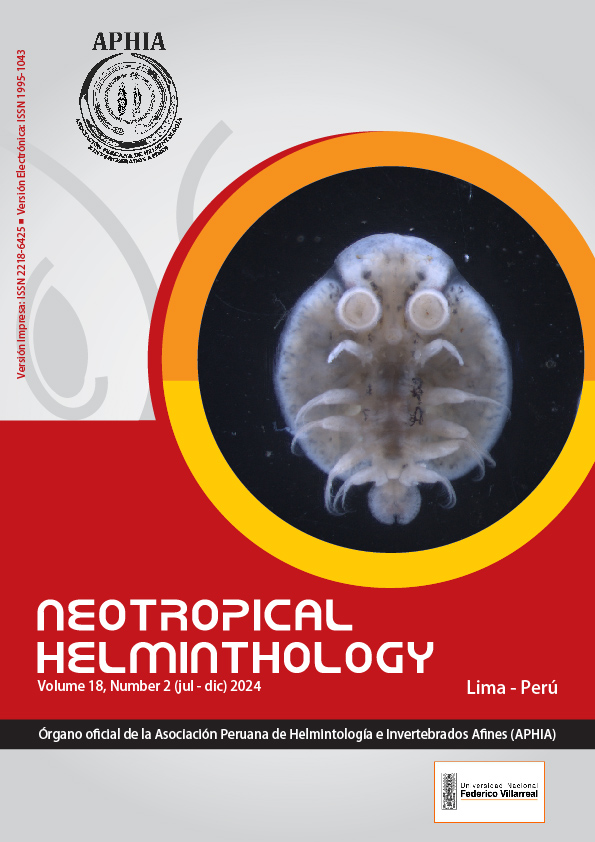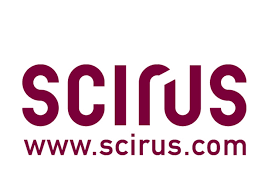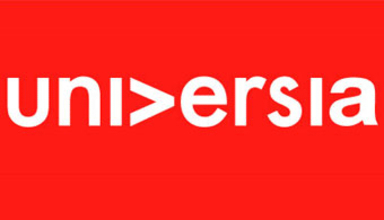Denarycotyle bajacaliforniensis (Monogenea: Monocotylidae) of Rhinoptera steindachneri (Rhinopteridae) from Puerto Viejo, Baja California Sur, México
DOI:
https://doi.org/10.62429/rnh20242181845Keywords:
Baja California Sur, México, Monocotylidae, Monogenea, MyliobatidaeAbstract
Rhinoptera steindachneri Evermann & Jenkins, 1891 is a myliobatid elasmobranch distributed in the Pacific Ocean, from Baja California, including the Gulf of California, to Peru and it has been subject of parasitological studies in several states of Mexico. In the present work, a new species of monogenenean monocotylid, obtained from the gills of R. steindachneri collected from Puerto Viejo, Baja California Sur (BCS), is described. Their morphological characteristics are very similar to those described for Denarycotyle gardneri Pulido-Flores, Monks and Violante-González, 2015; however, the new species is distinguished from it by the following characteristics: hooks of the posterior medial septa lack sclerosed accessory piece, in the anterior region there is a sucker-like muscular structure in the center of which the mouth is located, no lateral glands to the pharynx are observed, the ejaculatory bulb is different in shape (it is ovoid and in some specimens it looks like a muscular barrel with longitudinal muscle fibers), the terminal region of the male reproductive system is surrounded by a glandular mass that occupies the entire intercecal space, and the wall of the ootype is muscular and glandular tissue is observed inside. Puerto Viejo constitutes a new record of the geographical range for the Denarycotyle species. A modification is proposed in the diagnosis of the genus introducing the characters “hamuli with or without accessory piece. With or without glands lateral to the pharynx. Seminal vesicle and ejaculatory bulb with or without glandular tissue occupying the intercecal space. Ootype with or without glandular tissue inside”.
Downloads
Published
How to Cite
Issue
Section
License

This work is licensed under a Creative Commons Attribution-NonCommercial-NoDerivatives 4.0 International License.
OBJETO: El AUTOR-CEDENTE transfiere de manera TOTAL Y SIN LIMITACIÓN alguna al CESIONARIO los derechos patrimoniales que le corresponden sobre la (s) obra(s) tituladas: xxxxxxxxxxxxxxxx, por el tiempo que establezca la ley internacional. En virtud de lo anterior, se entiende que el CESIONARIO adquiere el derecho de reproducción en todas sus modalidades, incluso para inclusión audiovisual; el derecho de transformación o adaptación, comunicación pública, traducción, distribución y, en general, cualquier tipo de explotación que de las obras se pueda realizar por cualquier medio conocido o por conocer en el territorio nacional o internacional.
REMUNERACIÓN: La cesión de los derechos patrimoniales de autor que mediante este contrato se hace será a título gratuito.
CONDICIONES Y LEGITIMIDAD DE LOS DERECHOS: El AUTOR-CEDENTE garantiza que es propietario integral de los derechos de explotación de la(s) obra(s) y en consecuencia garantiza que puede contratar y transferir los derechos aquí cedidos sin ningún tipo de limitación por no tener ningún tipo de gravamen, limitación o disposición. En todo caso, responderá por cualquier reclamo que en materia de derecho de autor se pueda presentar, exonerando de cualquier responsabilidad al CESIONARIO.
LICENCIA DE ACCESO ABIERTO: El AUTOR-CEDENTE autoriza que manuscrito publicado en La Revista Neotropical Helminthology permanece disponible para su consulta pública en el sitio web https://www.neotropicalhelminthology.com/ y en los diferentes sistemas de indexación y bases de datos en las que la revista tiene visibilidad, bajo la licencia Creative Commons, en la modalidad Reconocimiento-No comercial- Sin Trabajos derivados –aprobada en Perú, y por lo tanto son de acceso abierto. De ahí que los autores dan, sin derecho a retribución económica, a la Asociación Peruana de Helmintología e Invertebrados Afines (APHIA), los derechos de autor para la edición y reproducción a través de diferentes medios de difusión.


 Numero 2 Volumen 19 - 2025 (versión Anticipada)
Numero 2 Volumen 19 - 2025 (versión Anticipada)














































